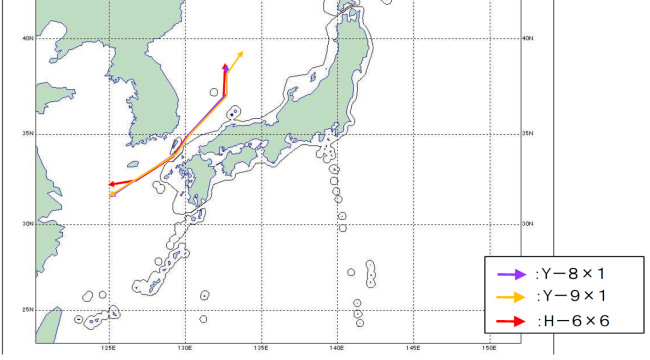[Newsmaker] THAAD tension brews after China sends planes to Korea's air zone
2017-01-10 16:09
Tension between South Korea and China flared up Tuesday after Beijing‘s fighter jets entered South Korea’s air defense zone without prior notice, amid protests from China over a US anti-missile system set to be installed here.
According to the Korea’s Joint Chiefs of Staff, some 10 Chinese military planes -- including bombers -- flew into the Korean air defense identification zone near the southern island of Jeju between 10 a.m. and 3 p.m. Monday. The aircrafts also entered an equivalent air defense zone near the Tsushima Strait of Japan.
In response, the South Korea military sent out 10 fighter jets, including F-15Ks and KF-16s. They sent a warning signal to the Chinese planes who, the Korean military said, were in and out of the KADIZ until they exit the area without conflict.
 |
| (Yonhap) |
“(China) gave us the answer that it was for training purposes,” said a JCS official on the customary condition of anonymity. “We believe they have a different purpose at different times. It needs further analysis to find out what they were getting at.”
Beijing has adopted a series of retaliatory measures against Seoul since it reached an agreement with the US to deploy the THAAD battery here last July. Not only did China impose punitive trade measures against Korean companies, it has even banned Korean actors and actresses from appearing on its shows.
During a meeting on Jan. 4 with lawmakers of Korea’s main opposition Democratic Party of Korea, Chinese Foreign Minister Wang Yi condemned Seoul’s decision to deploy THAAD, saying the process should be “delayed and frozen” if South Korea wants to expand cooperation with Beijing.
Air defense identification zones have been a friction point among Northeast Asian countries who have endured decadeslong territorial disputes. The conflicts have been further exacerbated by China, which has recently become assertive over its territorial claims, prompting protests from neighboring states.
Particularly, Beijing’s ADIZ in the East China Sea unveiled in 2013 drew protests from Korea, Japan and the US, as it includes spaces over the South Korea-controlled Ieodo, a submerged rock located around 150 kilometers southwest of Jeju, as well as a chain of islands controlled by Japan and claimed by China.
The measure prompted Korea and Japan to declare their own ADIZs. Seoul, for its part, expanded its own KADIZ to cover Ieodo, on which it has scientific research facilities. Prior to the expansion, Korea’s ADIZ, demarcated by the US in 1951 during the Korean War, did not cover Ieodo.
Since the ADIZs are not officially recognized airspace, military officials noted, states are not able to exercise sovereign rights to evict aircrafts flying over them. Instead, individual states can issue warnings to other nations who enter the area without prior notice.
“Under the KADIZ, we are only allowed to detect and track unidentified aircrafts. We are not able to take forcible measures to evict those who intrude in the zone. It is different from what we can do in the airspace,” said the JCS official.
According to the JCS, Chinese military planes intruded into the KADIZ on more than a dozen occasions last year. But the incident Monday was “unusual,” they said, because it involved more than 10 aircrafts. In 2015, there were only few aircrafts flying into the area.
Mounting tensions over the air defense areas has spurred the call for building a proper communication channel between Korea, China and Japan -- such as to inform each other of their entry into the areas and to take preventive measures to prevent potential armed conflicts.
Currently, the three countries are not obliged to notify each other of their entry into the ADIZs, the JCS said. South Korea often shares flight information with Japan when their aircrafts fly along the ADIZs under bilateral agreement. It has not yet to make such a pact with China.
By Yeo Jun-suk (jasonyeo@heraldcorp.com)


